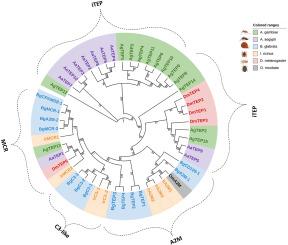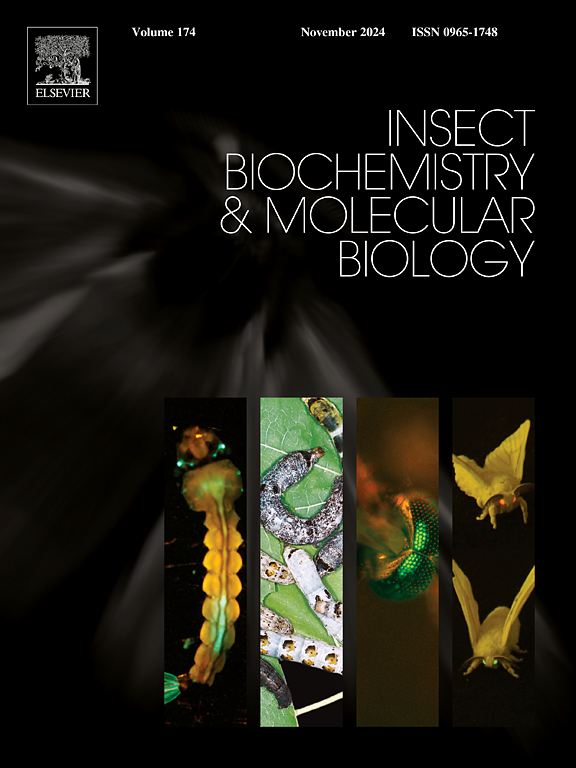The immune function of thioester-containing proteins in typical invertebrate disease vectors
IF 3.2
2区 农林科学
Q2 BIOCHEMISTRY & MOLECULAR BIOLOGY
引用次数: 0
Abstract
Disease vectors, such as arthropods, primarily rely on innate immunity to counteract pathogen invasions, typically through the recognition and binding of pathogen-associated molecular patterns (PAMPs) by the host's pattern recognition receptors (PRRs). As a conserved immune effector gene family from insects to mammals, the complement system may play an essential role in combating pathogenic microorganisms. In arthropods, the complement proteins are often referred to as thioester-containing proteins (TEPs) because thioester motifs are one of the essential functional domains of the first proteins characterized within the C3 and A2M family. TEPs mainly function as specialized PRRs in sensing and binding to pathogens or their components. This paper presents a comprehensive review of the common domain and functions of TEPs in major disease vectors, in particular the specific decision-making ones expressed by Arthropoda (medical arthropods) and Mollusca (Biomphalaria glabrata) after pathogen infections. The relationship between the structure and antibacterial/antiviral activities of TEPs would further our understandings on the mechanisms governing the initiation of innate immune responses in typical disease vectors.

典型无脊椎动物病媒中含硫酯的蛋白质的免疫功能。
节肢动物等疾病载体主要依靠先天性免疫来抵御病原体的入侵,通常是通过宿主的模式识别受体(PRRs)识别和结合病原体相关分子模式(PAMPs)。作为一个从昆虫到哺乳动物的保守免疫效应基因家族,补体系统可能在抗击病原微生物的过程中发挥着至关重要的作用。在节肢动物中,补体蛋白通常被称为含硫代酯蛋白(TEPs),因为硫代酯基团是 C3 和 A2M 家族中首批表征蛋白的重要功能域之一。TEPs 主要在感知和结合病原体或其成分方面发挥专门的 PRRs 功能。本文全面综述了 TEPs 在主要疾病媒介中的共同结构域和功能,特别是节肢动物(医学节肢动物)和软体动物(玻璃鲎)在病原体感染后表达的特定决策性 TEPs。TEPs 的结构与抗菌/抗病毒活性之间的关系将进一步加深我们对典型病媒先天免疫反应启动机制的理解。
本文章由计算机程序翻译,如有差异,请以英文原文为准。
求助全文
约1分钟内获得全文
求助全文
来源期刊
CiteScore
7.40
自引率
5.30%
发文量
105
审稿时长
40 days
期刊介绍:
This international journal publishes original contributions and mini-reviews in the fields of insect biochemistry and insect molecular biology. Main areas of interest are neurochemistry, hormone and pheromone biochemistry, enzymes and metabolism, hormone action and gene regulation, gene characterization and structure, pharmacology, immunology and cell and tissue culture. Papers on the biochemistry and molecular biology of other groups of arthropods are published if of general interest to the readership. Technique papers will be considered for publication if they significantly advance the field of insect biochemistry and molecular biology in the opinion of the Editors and Editorial Board.

 求助内容:
求助内容: 应助结果提醒方式:
应助结果提醒方式:


